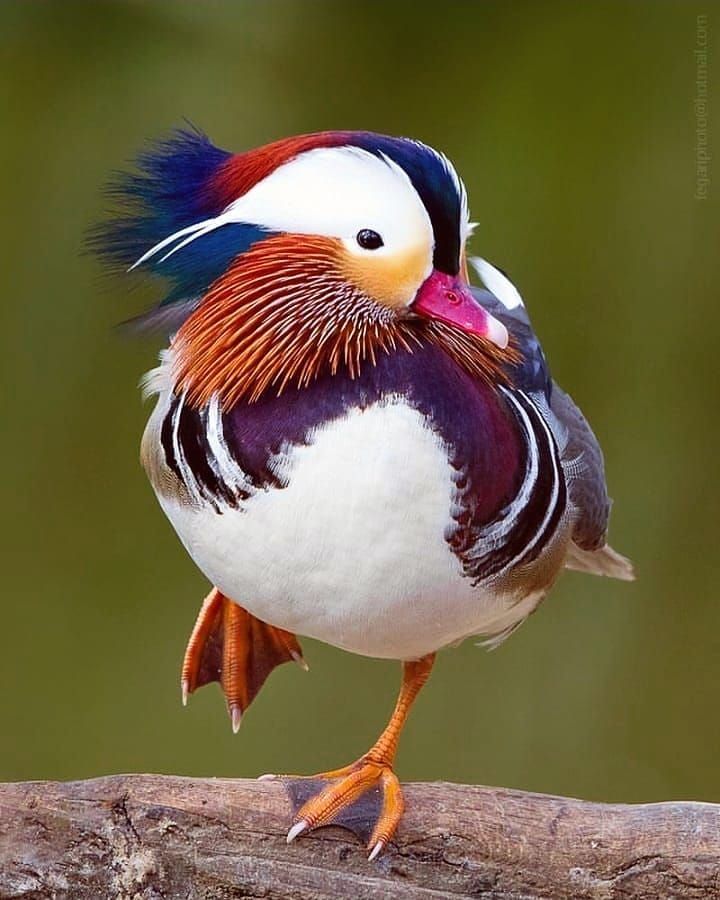Few birds on Earth rival the breathtaking beauty of the Mandarin Duck (Aix galericulata). With males draped in vivid splashes of orange, green, purple, and white, they look less like waterfowl and more like moving works of art. Their ornate crest, fan-shaped orange “sails” on their wings, and striking contrasts make them one of the most admired ducks in the world.
Native to East Asia, Mandarin ducks inhabit wooded lakes, ponds, and slow-moving rivers, especially where willow and oak trees line the banks. In spring, they often nest in tree cavities high above the ground, sometimes more than 20 meters up. Once hatched, ducklings leap bravely from these heights, bouncing on the forest floor below before following their mother to water—a feat that seems almost miraculous.
What truly elevates the Mandarin duck beyond its beauty is its symbolism. In Chinese, Japanese, and Korean cultures, they are regarded as emblems of love and fidelity, since pairs are often seen together year-round. For centuries, “yuan-yang” (鸳鸯, Mandarin ducks) have appeared in poetry, paintings, and wedding gifts as tokens of loyalty and marital harmony. Unlike many duck species, they form strong pair bonds, reinforcing their reputation as icons of devotion.
Despite their cultural prominence, wild populations have suffered from habitat destruction and logging, particularly in China and Russia where they breed. Yet, thanks to protection and the species’ popularity in ornamental collections, Mandarin ducks remain relatively secure today. They have even established introduced populations in parts of Europe and North America, where their dazzling plumage continues to astonish onlookers.
To see a Mandarin duck gliding across still water is to glimpse living art in motion—a reminder that nature, like a master painter, sometimes creates beauty so profound that it transcends cultures and centuries.
